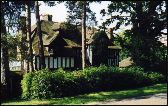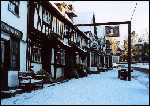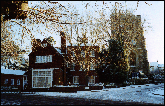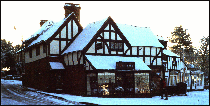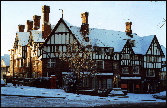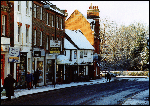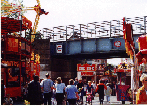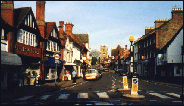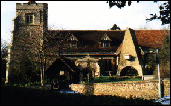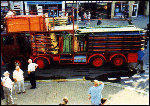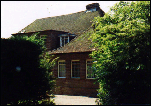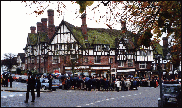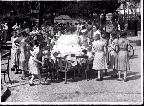The leaves of its many trees, varying from pale yellows through greens to dark reds convey an atmosphere of tranquillity so close to the everyday hustle and bustle.
This section of our web site is devoted to trying to illustrate its character by showing its historic buildings, some of its history and snippets about its famous or otherwise interesting residents
Opposite:'Naseby' A cottage on Pinner Hill, June 1999. We've since been informed that the timber for some of the frames came from the old Bank of England building.
Click the thumbnail above for a fuller Image
